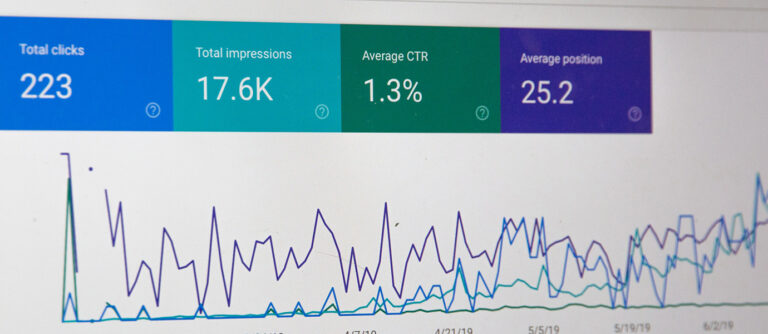Promote Your HVAC Services with Email Marketing

Introduction to HVAC Email Marketing
Email marketing is a powerful tool for businesses in the heating, ventilation, and air conditioning (HVAC) industry. By using email marketing effectively, you can communicate with your customers, build lasting relationships, and promote your services to a broad audience. In this article, we will discuss strategies, tips, and best practices for promoting your HVAC services with email marketing.
Why email marketing is important for HVAC businesses
Email marketing allows you to engage with your customers regularly, keeping your services in mind. It is a cost-effective way to reach a large number of people, and it can be easily tailored to meet the needs of your specific audience. With high open and click-through rates, email marketing is a proven method for increasing sales and driving customer loyalty.
Benefits of email marketing for HVAC services
- Cost-effective: Unlike traditional marketing methods, email marketing is a cost-effective way to reach your target audience.
- Targeted messaging: You can segment your email list to send targeted messages to specific customer groups.
- Customer engagement: Email marketing allows you to stay connected with your customers and build relationships over time.
- Increased sales: By promoting your services through email, you can drive more sales and grow your business.
- Measurable results: You can track key performance indicators (KPIs) to measure the success of your email marketing campaigns and make data-driven decisions.
Building an Email List
Collecting email addresses
To get started with email marketing, you need to build a list of contacts who have given you permission to send them marketing emails. You can collect email addresses through various methods, including:
- Website sign-up forms: Place a sign-up form on your website to collect email addresses from visitors.
- Social media: Promote your email list on your social media channels and encourage followers to sign up.
- In-person events: Collect email addresses at trade shows, conferences, or other events where you interact with potential customers.
- Customer database: If you have an existing customer database, you can ask for permission to add them to your email list.
Segmenting your list
Segmenting your email list allows you to send targeted messages to specific groups of customers. You can segment your list based on various factors, such as:
- Geographic location
- Type of service needed (heating, cooling, maintenance, etc.)
- Customer preferences or interests
- Customer lifecycle stage (new, active, or inactive)
- Previous interactions with your business
By segmenting your list, you can create more personalized and relevant content for each customer group, leading to higher open and click-through rates and, ultimately, better results for your email marketing campaigns.
Creating Compelling Content
Email newsletter
An email newsletter is an excellent way to inform your customers about your HVAC services, industry news, and helpful tips. Your newsletter should be engaging and informative, focusing on content that provides value to your subscribers. Some ideas for content include:
- Maintenance tips and tricks for homeowners
- Energy-saving advice
- Seasonal reminders (e.g., preparing for winter or summer)
- Company news and updates
- Customer testimonials or case studies
Promotions and discounts
Offering promotions and discounts through email is an effective way to incentivize customers to take action, whether it’s booking a service appointment or upgrading their HVAC system. Be sure to clearly communicate the terms of the promotion, and consider using scarcity tactics, such as limited-time offers or exclusive discounts for email subscribers, to create a sense of urgency.
Seasonal reminders and tips
Seasonal reminders and tips are a great way to keep your HVAC services top of mind and demonstrate your expertise. For example, you can send an email in the fall reminding customers to schedule a heating system checkup before winter or an email in the spring encouraging customers to book an air conditioning tune-up.
Personalization and Segmentation
Personalized subject lines and content
Personalizing your email subject lines and content can significantly improve open and click-through rates. Use your subscribers’ names in the subject line or greeting, and tailor the content of the email based on their preferences, interests, or previous interactions with your business.
Targeting specific customer groups
By segmenting your email list, you can create targeted campaigns for specific customer groups. For example, you can email customers who recently had a service appointment, offering a discount on a maintenance plan or upselling additional services. Or, you can target new homeowners in your service area with a special introductory offer.
Email Design and Mobile Responsiveness
Importance of responsive email design
With most people now using mobile devices to check their email, it’s crucial that your email design is responsive and looks good on all devices. A responsive email design will automatically adapt to the screen size of the device, ensuring a seamless experience for your subscribers.
Tips for creating mobile-friendly emails
- Use a single-column layout: This makes it easier for subscribers to read your email on a small screen.
- Choose a readable font size: Make sure your text is large enough to read on a mobile device without requiring the user to zoom in.
- Optimize images: Resize and compress images to ensure they load quickly and don’t slow down the email.
- Include clear calls to action (CTAs): Make it easy for subscribers to take action by including prominent, easy-to-click buttons or links.
Scheduling and Frequency
Best time to send emails
Finding the best time to send your emails can help improve open and click-through rates. While the optimal time may vary depending on your audience, some general guidelines include:
- Avoid weekends, when people are less likely to check their email.
- Send emails during the workweek, preferably on Tuesdays or Thursdays.
- Aim to send your emails in the late morning or early afternoon, when people are more likely to check their inbox.
Determining the right frequency
Sending emails too frequently can lead to subscriber fatigue and higher unsubscribe rates, while sending emails too infrequently may cause your subscribers to forget about your business. A good starting point is to send one or two emails per month, but you should monitor your open and click-through rates to determine the optimal frequency for your audience. Consider adjusting your frequency based on the seasonality of your business, sending more frequent emails during peak seasons, and scaling back during slower periods.
Email Automation
Welcome series
When a new subscriber joins your email list, it’s a good idea to send a welcome series of emails to introduce them to your business and set expectations for future communications. A welcome series can include:
- A thank-you email for subscribing, along with an overview of your HVAC services and what the subscriber can expect from your emails.
- An email highlighting your company’s unique selling points or customer testimonials.
- A promotional offer or discount exclusive to new subscribers.
Service reminders
Automated service reminders can help ensure your customers never miss a maintenance appointment or system checkup. By sending these reminders at the appropriate time (e.g., six months or one year after their last appointment), you can encourage repeat business and maintain strong customer relationships.
Customer satisfaction follow-up
After a customer has used your HVAC services, send a follow-up email asking for feedback or a review. This not only helps you gather valuable insights on how to improve your services but also demonstrates that you value your customers’ opinions.
Tracking and Measuring Success
Key performance indicators (KPIs)
To determine the success of your email marketing campaigns, you’ll need to track key performance indicators (KPIs), such as:
- Open rate: The percentage of subscribers who opened your email.
- Click-through rate (CTR): The percentage of subscribers who clicked on a link in your email.
- Conversion rate: The percentage of subscribers who took a desired action (e.g., booked a service appointment) after clicking a link in your email.
- Unsubscribe rate: The percentage of subscribers who unsubscribed from your email list.
By monitoring these KPIs, you can identify areas for improvement and make data-driven decisions to optimize your email marketing campaigns.
Analyzing data to improve your campaign
Regularly reviewing your email marketing data can help you identify trends, patterns, and areas for improvement. Look for correlations between specific content, subject lines, or send times and higher open and click-through rates. Use this information to refine your campaigns and test new strategies to improve your results continuously.
Complying with Email Marketing Regulations
GDPR and CAN-SPAM
When conducting email marketing, it’s essential to comply with relevant regulations, such as the General Data Protection Regulation (GDPR) in the European Union and the CAN-SPAM Act in the United States. These regulations generally require that you obtain explicit consent from subscribers before sending them marketing emails, provide a clear and easy way to unsubscribe, and include your physical mailing address in every email.
How to avoid spam filters
To ensure your emails reach your subscribers’ inboxes, follow these best practices to avoid spam filters:
- Use a reputable email service provider (ESP) with a good sender reputation.
- Maintain a clean email list by regularly removing bounced emails, unsubscribes, and inactive subscribers.
- Avoid using spam-triggering words or phrases in your subject lines and content.
- Include a clear unsubscribe link in every email.
Conclusion
Email marketing is a powerful tool for promoting your HVAC services, engaging with your customers, and driving business growth. By implementing the strategies, tips, and best practices discussed in this article, you can create effective email marketing campaigns that deliver results for your HVAC business.
FAQs
How do I grow my HVAC email list?
You can grow your email list by collecting email addresses through website sign-up forms, social media, in-person events, and existing customer databases. Always obtain explicit consent from subscribers before adding them to your email list.
What type of content should I include in my HVAC email marketing campaigns?
Include content that is engaging, informative, and provides value to your subscribers, such as maintenance tips, energy-saving advice, seasonal reminders, promotions, discounts, and company news.
How often should I send email campaigns for my HVAC business?
A good starting point is one or two emails per month. Monitor your open and click-through rates to determine the optimal frequency for your audience and adjust based on seasonality or business needs.
What are the key performance indicators (KPIs) for measuring the success of my email marketing campaigns?
Important KPIs for email marketing include open rate, click-through rate (CTR), conversion rate, and unsubscribe rate. Monitor these metrics to optimize your campaigns and make data-driven decisions.
How can I ensure my emails comply with email marketing regulations, such as GDPR and CAN-SPAM?
Obtain explicit consent from subscribers before sending marketing emails, provide a clear and easy way to unsubscribe, and include your physical mailing address in every email. Additionally, follow best practices to avoid spam filters, such as using a reputable email service provider (ESP) and maintaining a clean email list.




